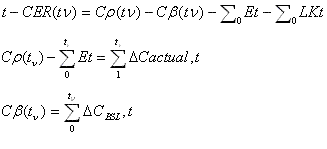Project Design Documents (PDDs)
What is a PDD?
A Project Design Document (PDD) lays out the essential details of the project activity, including:
- How the Baseline was established
- What the Project Emissions are
- What the total Emission Reductions will be that the project activity expects to achieve, and
- How the project activity will be Monitored
The format for PDDs is laid down by the Executive Board of the Clean Development Mechanism (EB). In case an approved methodology is used, the project proponent also has to explain why this particular methodology applies in their case.
What are EB methodologies?
There are several approved methodologies already available for project activities under the CDM. If you think that your project activity does not fit any of the approved methodologies, you can propose a new one.
The CDM has a process for having methodologies for calculating CERs approved.
- Anyone who thinks they have a good project idea and can reduce emissions, can put up a new methodology proposal to the Executive Board.
- The Methodology Panel of the EB will check the proposed new methodology, will have it peer reviewed, and may approve it.
- Once it is approved it joins the long list of detailed approved methodologies for various types of projects in all the various sectors in which GHGs can be reduced. Once the project participant has run their project and have generated say one year's worth of emission reductions using the technology or adopting the activities they have described in their PDD, they can monitor their emission reductions.
- Once their monitoring report is verified by the Designated Operating Entity, the DOE will forward the verified report of the number of monitored emission reductions to the EB, and the project participant can receive their CERs into their holding account at the UNFCCC.
- The project participant can then transfer their CERs from their holding account to whom ever they wish to sell their CERs to, or to whom ever they have already committed their CERs.
Formulae for PDDs
E.g. in Afforestation Reforestation Approved Methodology 0001 (AR-AM0001), two of the many formulae given are for calculating tCERs and lCERs.
t-CERs reflect the existing stock change at the time of verification minus project emissions minus leakage (t CO2). The formula is:

- t-CER (tv)
- t-CERs issued at year of verification tv (t CO2)
- Cp (tv)
- Existing carbon stocks at the year of verification tv (t CO2)
l-CERs reflect the increment of the stock change at the time of verification minus project emissions minus leakage compared to the existing stock change at the previous time of verification (t CO2). The formula is:

- t-CER (tv)
- t-CERs issued at year of verification tv (t CO2)
- Cp (tv)
- Existing carbon stocks at the year of verification tv (t CO2)
- l-CER (tv)
- l-CERs issued at year of verification tv (t CO2)
- CB (tv)
- Estimated carbon stocks of the baseline scenario at the year of verification tv (t CO2) UNFCCC/CCNUCC
- E(t)
- Annual project emissions (t CO2)
- LK(t)
- Annual leakage (t CO2)
- tv
- Year of verification
- K
- Time span between two verification occasions (year)
What is a crediting period?
Every PDD will provide calculations of its estimated emission reductions (in the case of an energy project activity) or its net GHG removals by sinks (in the case of forestry) for the chosen crediting period.
The chosen crediting period may well extend beyond the first commitment period under the Kyoto Protocol, which runs from 2008 to 2012.